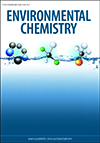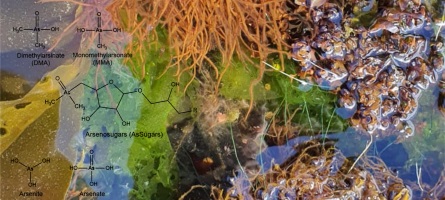Environmental context. Seaweeds are known to accumulate high levels of arsenic, and cellular concentrations may reach several orders of magnitude higher than that of the surrounding environment. Arsenic may be methylated by seaweed cells and further metabolised to water-soluble arsenic-containing sugars through unknown pathways. Whether these compounds are the result of a detoxification process or are produced with a biological purpose remains to be seen. (Image credit: Rebecca Sim.)

Environmental Chemistry
Volume 21 Number 4 2024
Environmental context. Dissolved organic carbon (DOC) is ubiquitous in freshwater and concentrations are rising universally while pH is decreasing with climate change. This study demonstrates the interrelationships among DOC characterisation techniques and the pH-sensitive aspects of these techniques that were previously not well understood. As DOC regulates important processes within ecosystems, understanding DOC behaviour at altered pH and identifying techniques to effectively evaluate DOC composition are critical requirements for monitoring aquatic ecosystem health. (Image credit: Carolyn Morris.)






